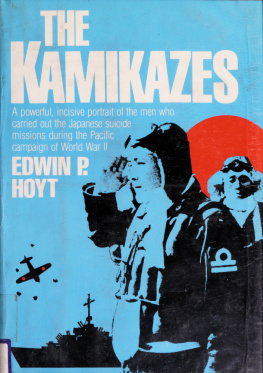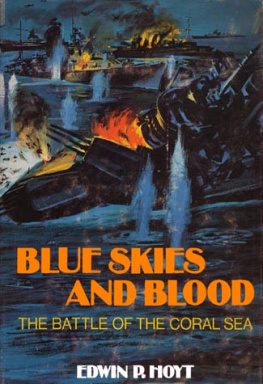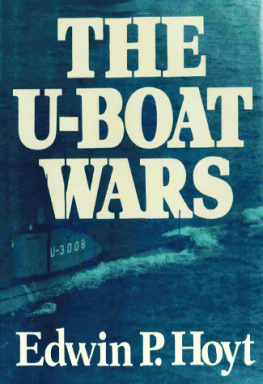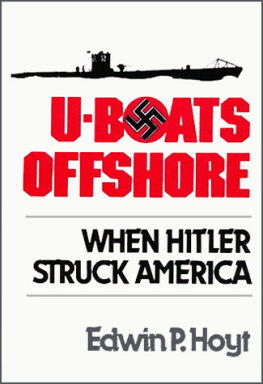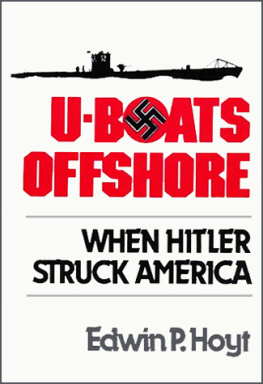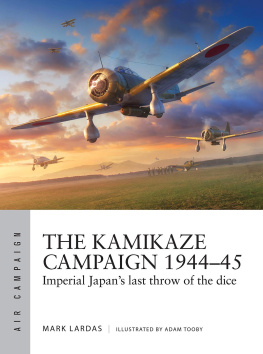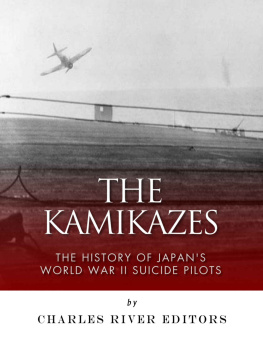Edwin P. Hoyt - The Kamikazes: Suicide Squadrons of World War II
Here you can read online Edwin P. Hoyt - The Kamikazes: Suicide Squadrons of World War II full text of the book (entire story) in english for free. Download pdf and epub, get meaning, cover and reviews about this ebook. year: 1999, publisher: Burford Books, genre: History. Description of the work, (preface) as well as reviews are available. Best literature library LitArk.com created for fans of good reading and offers a wide selection of genres:
Romance novel
Science fiction
Adventure
Detective
Science
History
Home and family
Prose
Art
Politics
Computer
Non-fiction
Religion
Business
Children
Humor
Choose a favorite category and find really read worthwhile books. Enjoy immersion in the world of imagination, feel the emotions of the characters or learn something new for yourself, make an fascinating discovery.
- Book:The Kamikazes: Suicide Squadrons of World War II
- Author:
- Publisher:Burford Books
- Genre:
- Year:1999
- Rating:4 / 5
- Favourites:Add to favourites
- Your mark:
- 80
- 1
- 2
- 3
- 4
- 5
The Kamikazes: Suicide Squadrons of World War II: summary, description and annotation
We offer to read an annotation, description, summary or preface (depends on what the author of the book "The Kamikazes: Suicide Squadrons of World War II" wrote himself). If you haven't found the necessary information about the book — write in the comments, we will try to find it.
The Kamikazes: Suicide Squadrons of World War II — read online for free the complete book (whole text) full work
Below is the text of the book, divided by pages. System saving the place of the last page read, allows you to conveniently read the book "The Kamikazes: Suicide Squadrons of World War II" online for free, without having to search again every time where you left off. Put a bookmark, and you can go to the page where you finished reading at any time.
Font size:
Interval:
Bookmark:

Hoyt, Edwin Palmer
This book was produced in EPUB format by the Internet Archive.
The book pages were scanned and converted to EPUB format automatically. This process relies on optical character recognition, and is somewhat susceptible to errors. The book may not offer the correct reading sequence, and there may be weird characters, non-words, and incorrect guesses at structure. Some page numbers and headers or footers may remain from the scanned page. The process which identifies images might have found stray marks on the page which are not actually images from the book. The hidden page numbering which may be available to your ereader corresponds to the numbered pages in the print edition, but is not an exact match; page numbers will increment at the same rate as the corresponding print edition, but we may have started numbering before the print book's visible page numbers. The Internet Archive is working to improve the scanning process and resulting books, but in the meantime, we hope that this book will be useful to you.
The Internet Archive was founded in 1996 to build an Internet library and to promote universal access to all knowledge. The Archive's purposes include offering permanent access for researchers, historians, scholars, people with disabilities, and the general public to historical collections that exist in digital format. The Internet Archive includes texts, audio, moving images, and software as well as archived web pages, and provides specialized services for information access for the blind and other persons with disabilities.
Created with abbyy2epub (v.1.6.9)





$16.95
is
ISBN: D-fi77cl5
A powerful, incisive portrait of the menwho carried out the Japanese suicidemissions during the Pacific campaign ofWorld War II, and their role in prolongingthe war.
Between the early months of 1944 andV-J Day, the Kamikazes inflicted moredamage on American naval vessels andcaused more casualties to Americanfighting men than any single Pacific landbattle. Inspired by Admiral Ohnishi, whoconceived the plot from ancient Japanese historys divine wind, these superbly trained, fiercely obedient, recklessly ioyal pilotswilling to sacrificetheir lives in their efforts to bring theUnited States to its kneesare heredrawn with rare breadth and dimension.The brilliant defensive strategies of Admirals Halsey and Spruance put an endto the Kamikaze threat...but could theKamikazes reappear, in another time, inanother guise?
From a noted historian, a brilliant recreation of one of historys most curiousand frightening episodes, a riveting storyof the complex nature of patriotism, duty,sacrifice and fanaticism.
Illustrated with photographs



yS J
r /
a,
r Jy9
yer
-i.
Vf
*
**
- '( t
' .



For Olga Hoyt, who spent many hours on this booh.
Digitized by the Internet Archivein 2018 with funding fromKahle/Austin Foundation
https://archive.org/details/kamikazesOOhoyt


Prolog*
OCTOBER 13, 1944.
Aboard the U.S. aircraft carrier Franklin the crew was at actionstations, as they had been off and on all during the day. Air strikeshad been launched early in the morning against the Japanese innorthern Luzon, to cover the larger air battle still raging aroundFormosa.
Suddenly the squawk box began burbling and the air raid sirensscreamed. The gunners shaded their eyes and squinted up to seethe enemy.
A twin-seater plane with the red ball of the Rising Sun on sidesand wings came hurtling down toward the Franklin. At first itseemed like a dive-bombing attack, but the pilot dropped to one
The Kamikazes
thousand feet and still did not pull out. Straight as a die he cameineight hundred feet, five hundredand it became apparent onthe deck of the Franklin that he had no intention of sheering off.
He was going to crash the deck of the Franklinl
With equal horror two staff officers of the Imperial JapaneseNavys First Air Fleet watched through field glasses from theirreconnaissance plane as the two-seater plunged toward the Franklin. On the sides of the plane, as it fell, they could make out theword Naifu, roughly painted in white on the fuselage.
And then came the impact. An enormous explosion, and theplane disappeared in the cloud of smoke that erupted from thecarrier.
Naifuthe knife. To the staff officers the scene they had justwitnessed was meaningful in a horrible way. The pilot they hadwatched, Rear Admiral Masafumi Arima, had dived to his deathdeliberately. The Japanese officers did not know what to call hisaction that day, any more than did the Americans, but Arima wasthe first of the Kamikazes.
FORTY-EIGHT hours earlier two of Admiral William F. Halseyscarrier task groups had hit the Philippines hard, concentrating onairfields around the Manila area and the south. The Japanese navysFirst Air Fleet had borne the brunt of the attacks. For the thirdtime since the battle for Saipan the Air Fleets strength was beingdecimated by American carrier planes.
For a month Rear Admiral Masafumi Arima had fretted overwhat he regarded as useless inactivity. As commander of the Twenty-sixth Air Flotilla he was as aware as any other high-ranking officerof the problems. He knew that the replacement pilots he had beengetting were basically incapable. Not that they were unwilling orstupid. They were eager and intelligent and they learned fast. Thosethat survived learned fast, that is. But the problem was that theseyoung men were so ill-trained at home that more than a third ofthem never arrived in the Philippines. Their planes broke down;
Prologue
, 1
- V
more often they simply got lost and then were victimized either byenemy planes or anti-aircraft; or simply wandered around abovethe deep blue sea until they ran out of gas and crashed in thewater.
And when they did arrive in the Philippines they proved to beno match for the skillful American carrier pilots in their fast, toughGrumman fighters. Also, these days, as many aircraft were beingdestroyed on the ground as in the air. The whole prospect wasalmost totally discouraging.
But Admiral Arima was aware of an argument made by ViceAdmiral Takajiro Onishi at the time of the Saipan battle. Thatargument was shocking to many in the defense establishment andhad aroused a bitter argument in the navy. Onishi called on thosepilots who were unable to come to grips with the enemy in theordinary way to crash their planes into the foe. And thus, said theadmiral, those young pilots would be doing a great deed for theircountry, accomplishing something they probably could not do inany other way.
Next pageFont size:
Interval:
Bookmark:
Similar books «The Kamikazes: Suicide Squadrons of World War II»
Look at similar books to The Kamikazes: Suicide Squadrons of World War II. We have selected literature similar in name and meaning in the hope of providing readers with more options to find new, interesting, not yet read works.
Discussion, reviews of the book The Kamikazes: Suicide Squadrons of World War II and just readers' own opinions. Leave your comments, write what you think about the work, its meaning or the main characters. Specify what exactly you liked and what you didn't like, and why you think so.

